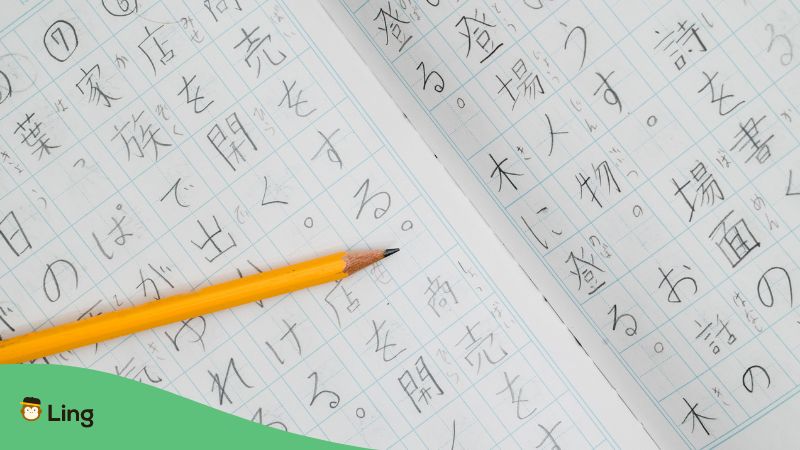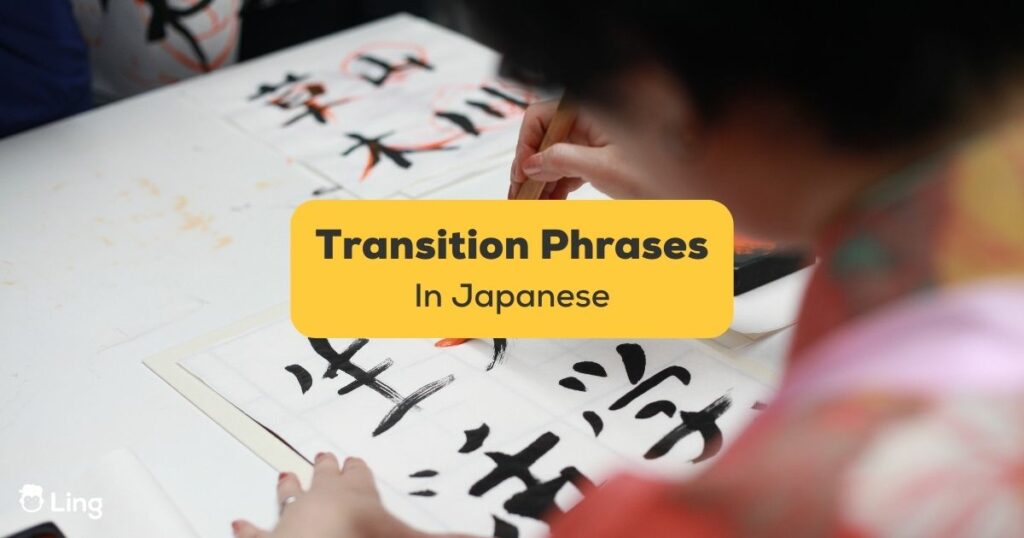Even though you know hundreds of Japanese vocabulary and grammar rules, you may not speak native-like. And that’s because you are missing the transition phrases in Japanese.
Transition phrases, or filler words, are the language items that make your sentences flow. So, even if you don’t speak Japanese at the N1 level, you can fake it until you make it by using filler words in your speech! Surprisingly, the Japanese language also has filler words, as we have in English. In this article, we’ll cover how to connect sentences in a natural and flowing way – like native speakers do – by using transition words.
Page Contents 📑
Why Should You Learn Transition Phrases In Japanese?
Learning filler words in Japanese as a learner is essential for natural and fluent communication. It will make your speech sound more authentic, boost your confidence, and enhance your overall language skills, making conversations more enjoyable and even more effective.
In case you didn’t know, fillers are short words or phrases (like “um,” “well,” or “you know”) that native speakers use to give themselves time to think or show agreement, and they make a conversation sound natural.
In today’s lesson, we’ll focus on transition words like fillers in the Japanese language. So, if you’re looking for Japanese conjunctions rather than fillers to connect your sentences, you should read our related article.

Commonly Used Transition Words In Japanese
1. あの (Ano)
Although it also means “that” as a demonstrative pronoun, あの (ano) can be used as a filler word in Japanese, similar to how you use “um” or “uh” in English. It is used when pausing to gather thoughts, express hesitation, or politely signal to others that you want to speak. It helps create a more natural flow in conversation and shows politeness or consideration while speaking.
Example:
あの、ちょっと待ってください。(Ano, chotto matte kudasai) – Um, please wait a moment.
2. えーと (Eeto)
In Japanese, えーと (eeto) is a common filler word used when pausing to gather thoughts or express hesitation, similar to the English “uh” or “um.” It helps give the speaker time to think before continuing their sentence. It’s a natural part of Japanese conversation and is used to avoid awkward silence while speaking.
Example:
えーと、それはちょっとわかりません。(Eeto, sore wa chotto wakarimasen) – Um, I don’t quite understand that.
3. それで (Sore de)
In Japanese, それで (sorede) is not typically used as a filler word like “um” or “uh.” Instead, it is a conjunctive adverb that means “so” or “therefore.” It is used to link ideas or events in a cause-and-effect manner. It indicates that the second action is a result of the first.
Example:
Aを買った。それで、Bも買った。(A o katta. Sore de, B mo katta) – I bought A. So, I also bought B.
Do you want to memorize Japanese words faster? If you’re looking for an all-in-one language-learning app, go ahead and download Ling from the App Store or Google Play now!
4. ええ (Ee)
In Japanese, ええ (ee) is not commonly used as a filler word like “um” or “uh.” Instead, it is a casual way to say “yes.” For example, if someone asks you if you want tea, you can reply with “ええ” to mean “yes.” It’s a simple and informal affirmation.
Example:
ええ、それは本当に素晴らしい景色ですね。(Ee, sore wa hontou ni subarashii keshiki desu ne.) – Um, that’s truly a wonderful view, isn’t it?
5. そうそう (Sou sou)
In Japanese, そうそう (sou sou) is used as a filler word to express agreement or confirmation, similar to the English “yeah,” “that’s right,” or “exactly.” It is often used in casual conversations to show that you understand or relate to what the other person is saying. For example, if someone tells you about their recent trip, you can respond with “そうそう” to show that you are following their story and agree with their points.
Example:
そうそう、昨日のパーティー楽しかったね!(Sō sō, kinō no pātī tanoshikatta ne!) – Yeah, yesterday’s party was fun, right!
6. なんか (Nanka)
In Japanese, なんか (nanka) is used as a filler word to express vagueness, uncertainty, or to downplay something. It’s similar to saying “sort of” or “kind of” in English. It softens the statement and shows that you may not have a strong opinion or can’t quite explain the situation clearly.
Example:
それはなんか面白い。(Sore wa nanka omoshiroi) – That’s kind of interesting.

7. ていうか (Te iu ka)
In Japanese, ていうか (te iu ka) is a filler phrase often used to introduce a different or contrasting thought. It’s similar to saying “or rather” or “more like” in English. It allows the speaker to rephrase or clarify their previous statement. It helps add nuance to the conversation and highlight a specific aspect of the subject.
Example:
彼は先生、ていうか、研究者だ。(Kare wa sensei, te iu ka, kenkyuusha da) – He’s a teacher, or rather, a researcher.
8. そういえば (Sō ieba)
In Japanese, そういば (sou ieba) is a filler phrase used to recall or mention something that suddenly comes to mind. It’s similar to saying “by the way” in English. It helps introduce a new topic or memory into the conversation.
Example:
そういえば、彼から連絡があった。(Sou ieba, kare kara renraku ga atta) – By the way, I got a message from him.
9. あら (Ara)
In Japanese, あら (ara) is not commonly used as a filler word. Instead, it is an interjection used to express surprise, similar to the English “oh” or “wow.” It is often used in reaction to unexpected or astonishing situations. It adds an emotional tone to the conversation.
Example:
あら、すごい!(Ara, sugoi!) – Oh, that’s amazing!
10. うーん (Uun)
In Japanese, うーん (uun) is a common filler word used when pausing to think, similar to the English “hmm” or “well.” It’s used to express hesitation or uncertainty while considering what to say. It helps to show that you’re thinking about your response.
Example:
うーん、ちょっと考えてください (Uun, chotto kangaete kudasai) – Well, please give me a moment to think.
Having read this article, we hope these filler words will help you speak Japanese more fluently from now on! If you’re tired of speaking with textbook phrases, throw that book into the garbage bin and start using Ling!
Start Learning Japanese With Ling!
Ling is a language-learning app that’s been specifically designed to help you learn 60+ foreign languages in a practical and natural way.
With Ling, you can start from scratch and learn how to write Japanese (and other Asian languages) characters. Then, you can practice your speaking and listening skills thanks to Ling’s AI chatbot, which creates real-life conversations and engages with you! So that you can develop not only vocabulary but also the local writing system, Japanese prepositions, and Japanese pronunciation.
By the way, Ling has a massive Japanese language blog where you can find dozens of articles covering every aspect of the Japanese language and culture.
































































